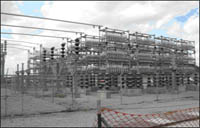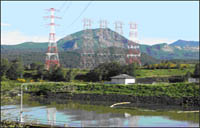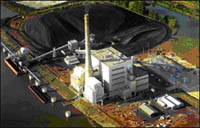Electric Power Generation, Transmission, and Distribution eTool
Overview
Work Hazards and Safety Practices in the Electric Power Industry
Workers in the electric power industry are potentially exposed to a variety of serious hazards, such as arc flashes (which include arc flash burn and blast hazards), electric shock, falls, and thermal burn hazards that can cause injury and death. This eTool seeks to inform employers of their obligations to develop the appropriate hazard prevention and control methodologies designed to prevent workplace injuries and illnesses. Employers are required to implement the safe work practices and worker training requirements of OSHA's Electric Power Generation, Transmission and Distribution Standard, 29 CFR 1910.269. The eTool also serves to empower workers engaged in the generation, transmission and distribution of electric power to understand the steps their employers must implement in order to provide them with a safe and healthful work environment. Not all the requirements of 29 CFR 1910.269 are covered, however.
Click on the topics listed below for specific safety requirements and practices.
This section includes:
- Overview
- Scope
- Generation vs. Transmission and Distribution
- Medical Services and First Aid
- Hazard Assessment and Job Briefing
- Energized vs. Deenergized Work
- Hazardous Energy Control
- Grounding for Employee Protection
- Personal Protective Equipment (PPE)
- Insulating Protective Equipment (IPE)
- Enclosed Spaces and Working Underground
- Overhead Line Work
- Illustrated Glossary
- Glossary of Terms
Also see the Scope for more information on this eTool and the 1910.269 standard.
See OSHA's Workers' Rights page for more information on rights and protections.
Disclaimer:
This eTool is intended to provide information about the Electric Power Generation, Transmission and Distribution standard (29 CFR 1910.269). The Occupational Safety and Health Act requires employers to comply with safety and health standards promulgated by OSHA or by a state with an OSHA-approved state plan. However, this eTool is not itself a standard or regulation, and it creates no new legal obligations.
eTools are "stand-alone," interactive, Web-based training tools on occupational safety and health topics. They are highly illustrated and utilize graphical menus. As stated in the disclaimer above, eTools do not create new OSHA requirements, nor limit or eliminate any such requirements.




